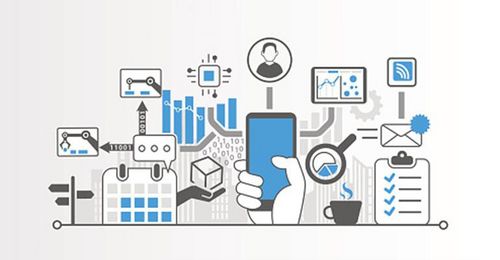VPN Downtime: How Redundancy and Fallback Solutions Ensure High Availability
Avoid costly VPN outages: learn how redundancy, failover solutions, and continuous testing keep your office and remote teams securely connected.

Industrial Revolution 4.0 has fundamentally changed how manufacturing systems are managed.
Highly-specialized operational technology (OT) is now being joined up with Industrial Internet of Things (IIoT) devices.
This allows technicians to access and remotely manage machine data in real-time to spot part failures at an early stage and maintain overall equipment effectiveness (OEE).
In some situations, it makes sense to manage data security directly via a remote desktop virtual private network (VPN) connection.
Increasingly, however, industrial enterprises are turning to more versatile cloud-based remote access VPNs. Cloud-based VPNs can provide system engineers with secure, flexible remote access to many hundreds of machines in the field, managed from a single, central control point.
Valuable Data Insight in Real-Time
Smart devices are being introduced to industrial systems to track a wide range of data.
Pressure sensors, for example, monitor pipelines to help detect leaks. Level sensors measure waste recycling, fuel storage or irrigation.
Water treatment centers use smart aquatic monitors while industrial processes use devices to measure and control plant and equipment temperatures.
Arguably the most common reason for IIoT deployment is for preventative maintenance. Industrial systems cost a lot of money to repair or replace.
Data collected from smart sensors plays an invaluable role in determining when a service is due or even when essential parts are about to fail.
Support administrators report between 60% and 70% of issues concern software upgrades or minor tweaks to equipment settings.
Remote connectivity lets managers keep a close eye on essential operational data. At the same time, it allows support engineers to troubleshoot issues in advance to ensure zero downtime.
Secure Remote IIoT Access
Traditionally, local IT environments are extended by remote desktop or VPN connections. This is a well-established way for engineers to manage systems and equipment over the Internet from remote locations. Minor problems, software patches or firmware updates can be actioned without having to leave head office. This saves time and cuts down on travel costs.
Cloud-based VPNs are a more recent development. They provide similar levels of protection for data passing between remote smart devices in the field and centrally located administrators. It means there is now a viable alternative to direct connections for managing remote equipment.
Access and management is enabled by means of client VPN software at the customer’s control center, a server belonging to a cloud provider like Amazon Web Services or Microsoft Azure and remote gateways on all endpoints.
Authentication and creation of encrypted tunnels is managed in the cloud.
A growing number of manufacturers and industrial organizations are pivoting to cloud-based VPN services for secure management of remote IIoT equipment. This is because cloud VPN services offer airtight security as well as additional flexibility, scalability and reduced technical complexity.
Airtight Security
Cloud-based VPN services create end-to-end encryption between an on premise central management point and remote IIoT devices.
The cloud server conducts authentication checks automatically and establishes the appropriate tunnels. It does not decrypt or store any data that passes through.
Furthermore, remote access to IIoT devices may be on demand – restricted to times and other parameters specified by the customer.
For example, access may be limited to service engineers according to the principle of least privilege. In short, security against hack attacks remains as airtight as possible.
Flexibility and Scalability
Users have the freedom to install client software on any endpoint device for remote access to IIoT data anywhere and at any time. Once connected, system administrators may remotely pull data for analysis or distribute software updates/patches exactly as if the smart devices were on the local network. In reality, they may be in a distant remote location.
Additionally, the remote access environment may be easily scaled up or down. Engineers can easily add/remove devices and/or manage client accounts/certificates in line with business requirements.
Reduced Technical Complexity
Many of the processes involved in establishing remote desktop connections are taken care of automatically. Engineers no longer need to manually configure complex security measures. Security elements may be set up at the click of a mouse.
Cloud services allocate specific virtual IP addresses to every endpoint. Systems engineers can assign identical IP schemes for different sites without having to worry about conflicts of address - further simplifying the installation process.
The cloud server acts as central point for setting up and managing remote devices. Administrators simply have to connect to it to monitor traffic and manage things like certificates, remote gateways and client accounts.
In summary, desktop VPNs have been an industry staple for secure access to remote equipment. Even today, there are plenty of situations where desktop connectivity to IIoT systems makes perfect sense.
However, cloud-based remote VPN access is fast emerging as a complementary technique. The ease-of-use, flexibility, and scalability of remote access VPN in combination with a cloud-based management infrastructure is becoming pivotal to protecting the privacy of valuable data to and from a multitude of remote IIoT devices as it passes over the Internet.